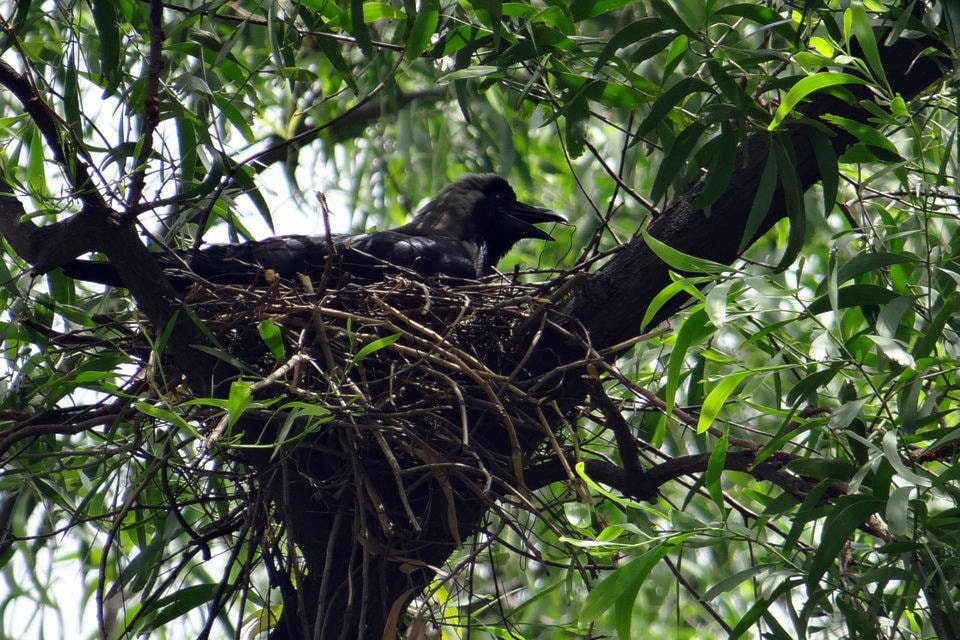The flowers are in bloom, the sun is beginning to make regular appearances from behind the clouds and the crows are dive bombing passersby.
It’s spring, which marks the breeding season for many animals across B.C., leading to some pretty wacky behaviour as they move to protect their newborns.
And while breeding season for crows isn’t quite as nightmarish as Alfred Hitchcock’s film The Birds, zoologist Wayne Goodey said it can quickly get intense.
OMG I had two crows attack my head at the same time once in the West End, it was brutal! People walking on the sidewalk just stoped and stared, didn't even help me. LOL! 😂
— Krystal Yee (@krystalatwork)
“I have spoken to some people who say they don’t go out this time of year without wearing a hat,” said Goodey, a professor at the University of British Columbia.
“Which is probably enough to make sure you’re not going to get scratched, but that doesn’t mean you aren’t going to get chased.”
Crow attacks have become a seasonal conversation in Vancouver. In January, adult birds find their way back to the nest they made the previous year, each time modifying it, according to Goodey.
And while that happens in the winter months, the aggressive defensiveness doesn’t happen until breeding season begins in March to June.
And once that starts, Goodey said, crows commonly defend an area around their nest up to one hectare in size.
Vancouver seems to be where the most number of crow-related chaos has ensued, even leading to a Lower Mainland professor, Jim O’Leary, creating an app so pedestrians can track and post the location of an attack, allowing others to know which areas to avoid.
“In Vancouver, especially in some neighbourhoods, population density is high; there’s lots of people walking around… these are all things that tend to increase the stress level for the birds, and they would be much more prone to defending,” he said.
Simply put: the crows will defend any potential predators from its nest, whether that be cats, squirrels, dogs or humans.
When 😱 ???
— Jorge Parra (@UnderK9)
Between Tuesday night and Wednesday morning, O’Leary said 68 people added their reports of crow confrontations to the interactive online map he and a colleague created in 2016.
He said June figures are higher than usual, possibly because March and April were cool and wet, delaying nesting and the crows’ territorial feints, flutters and outright airborne assaults that come with it.
Goodey said pedestrians should be aware of their vicinity to nests if they want to stay out of peck’s way.
“You just need to look up in the trees and see the nests,” he said. “The crows are not targeting you, or hate you… all they want to do is give you a reason to move on. If you keep moving once they chase you, you have no problem at all.”
But crows aren’t the only animals that get become more aggressive in the spring.
While deer breed during the fall, raccoons and skunks in rural areas of the province are also known to get defensive this time of year – especially in areas where food and other abundance is low, Goodey said.
“When they don’t have babies, they tend to avoid contact with people, but if they have babies nearby they will be quite aggressive towards people.”
Other animals to watch for are Canada geese and ducks, he said.
“Every year at this time there are lots of amusing YouTube videos that go up of people getting chased by geese.”
With a file from The Canadian Press
ashley.wadhwani@bpdigital.ca
Like us on and follow us on .

.png;w=120;h=80;mode=crop)

